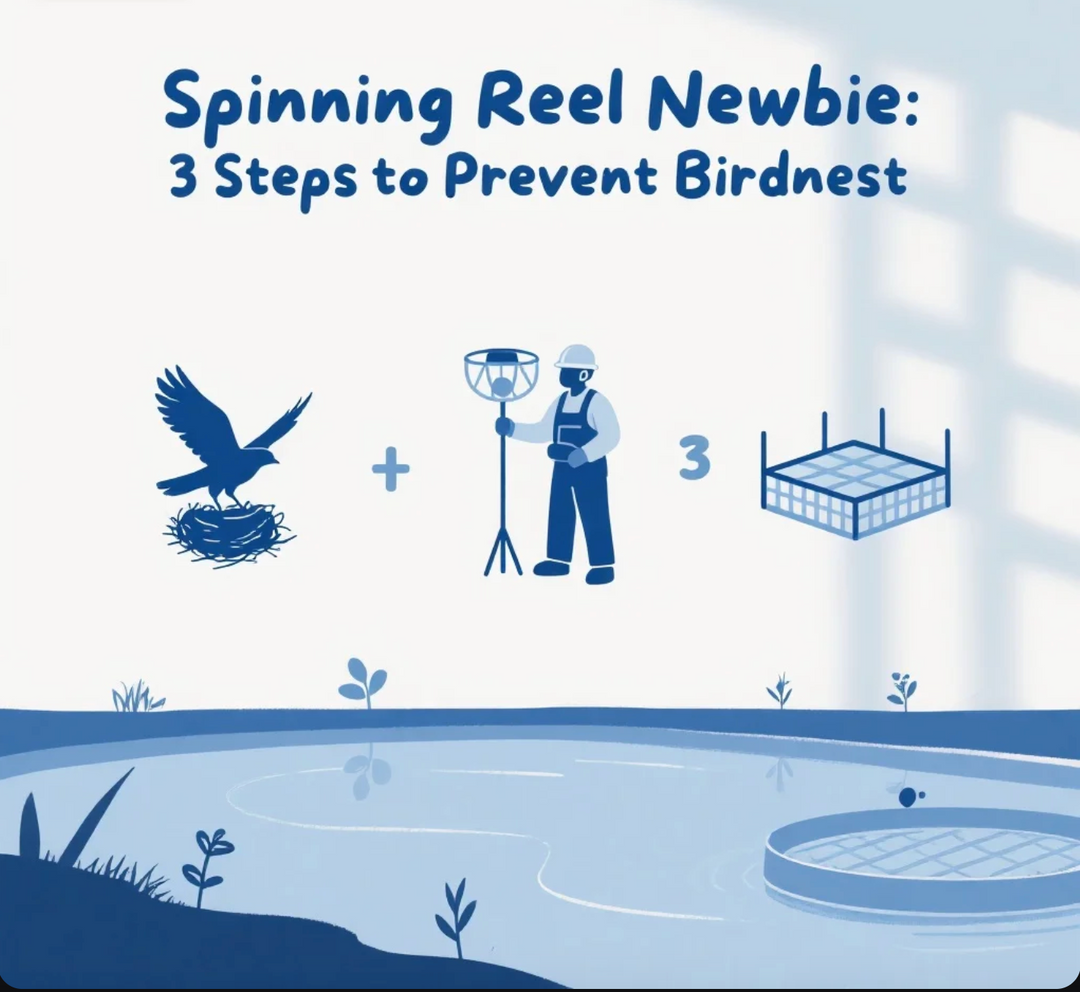Extend Your Spinning Reel’s Lifespan: 10 Overlooked Maintenance Tips (with Tool List)
Fishing is a beloved pastime, and your spinning reel is your most trusted companion on the water. Whether you’re casting with a best fishing reel brand or relying on a specialized underwater fishing reel, keeping your gear in top condition ensures reliability and peak performance. Sadly, many anglers overlook routine maintenance, leading to premature wear and costly replacements. In this guide, we’ll dive into 10 often-neglected tips to extend your spinning reel’s life—backed by experts and designed for anglers of all levels. Let’s get started!
Why Maintenance Matters for Your Spinning Reel
Before we jump into the tips, understand that a well-maintained spinning reel (whether it’s a closed face fishing reel, goofish spinning reel, or cnc spinning reel) lasts longer, casts smoother, and reduces downtime. Saltwater corrosion, dirt buildup, and friction from unlubricated parts are the top culprits of damage. By dedicating 30 minutes after each trip to basic care, you’ll save money and enjoy hassle-free fishing for years.
10 Essential Maintenance Tips (Plus Tools You Need)
1. Clean Thoroughly After Every Use
Saltwater, sand, and debris cling to your reel’s body, drag system, and spool—even after a single trip. Use a soft-bristled brush (an old toothbrush works!) and warm, soapy water to gently scrub all surfaces. For stubborn salt deposits on underwater fishing reels, soak the reel in fresh water for 15 minutes first. Rinse thoroughly and air-dry to prevent moisture buildup.
Tools Needed: Soft-bristled brush, bucket of fresh water, microfiber cloth.
2. Lubricate Moving Parts with Precision
Over-lubrication attracts dirt, while under-lubrication causes friction—both damage your reel. Focus on high-friction areas like the bail spring, drag adjustment knob, and spool shaft. Use a lightweight synthetic lubricant (avoid WD-40, which dries out quickly) and apply a tiny drop with a precision applicator. Wipe away excess to keep parts moving smoothly.
Tools Needed: Synthetic reel lubricant, precision applicator (or toothpick).
3. Inspect and Replace the Spool Line
Even the toughest spinning reel can’t perform well with frayed or tangled line. Check for nicks, kinks, or abrasions—replace the line if you spot damage. For best fishing reel brands, refer to the manufacturer’s line weight recommendations to avoid stressing the drag system. When restringing, leave ¼ inch of line beyond the spool’s edge to prevent birds-nesting during casts.
Tools Needed: Scissors, line cutter (optional), reel spooling tool.
4. Tighten Loose Screws and Bolts
Vibration from casting can loosen screws on the reel handle, foot (for closed face fishing reels), or side plates. Use a small Phillips or flathead screwdriver (depending on your reel’s design) to tighten them—just be careful not to overtighten, which can strip threads.
5. Deep-Clean the Drag System
The drag system (made of felt, cork, or rubber) is prone to clogging with debris and old grease. Disassemble the drag cover (refer to your reel’s manual) and gently scrub the drag washers with warm soapy water. Rinse, dry, and apply a thin layer of drag-specific lubricant before reassembling. A clean drag system ensures smooth line retrieval and reduces strain on the reel’s gears.
Tools Needed: Small screwdriver, toothbrush, drag lubricant.
6. Protect Against Saltwater Corrosion
For anglers using underwater fishing reels or fishing in saltwater, corrosion is the enemy. After rinsing with fresh water, apply a thin layer of anti-corrosion spray (like those designed for marine gear) to metal parts like the bail, spool shaft, and frame. This creates a protective barrier against salt and moisture.
7. Check for Gear Damage or Misalignment
Worn gears or misaligned spools can cause erratic casting and weak drag. Inspect the main gear, pinion gear, and spool for chips or uneven wear. If the spool wobbles when spun, it may need realignment—consult your reel’s manual or a professional for guidance.
8. Store Properly to Avoid Warping
Storing your spinning reel in direct sunlight, extreme heat, or a cramped space can warp plastic components or damage internal parts. Always keep it in a cool, dry place, preferably in its original box or a soft reel bag. For cnc spinning reels (which often have precision-machined parts), avoid stacking heavy items on top to prevent pressure damage.
9. Handle with Care During Transport
When traveling, secure your reel in a padded compartment or wrap it in a soft cloth to prevent scratches. Avoid dropping the reel or exposing it to rough handling—impacts can dislodge internal components or crack the frame.
10. Refer to the Manufacturer’s Manual
Every spinning reel is unique, even within the same brand. The manual includes specific maintenance guidelines, torque settings for screws, and recommended tools. Deviating from these instructions (e.g., using the wrong lubricant) can void warranties and shorten your reel’s lifespan.
Final Checklist: Your Maintenance Toolkit
Keep these essentials in your tackle box for quick post-trip care:
- Soft-bristled brush
- Synthetic lubricant (2-3 types: light for drag, medium for gears)
- Anti-corrosion spray
- Spare line and line cutter
- Screwdriver set (small Phillips/flathead)
- Reel cleaning cloth
- Small container for freshwater rinsing
By implementing these 10 tips, you’ll transform your reel from a “disposable” tool into a reliable partner for countless fishing adventures. Remember: consistency is key. Even the best fishing reel brand requires regular care to perform at its best. Share your own maintenance hacks in the comments below, and happy fishing!











Leave a comment